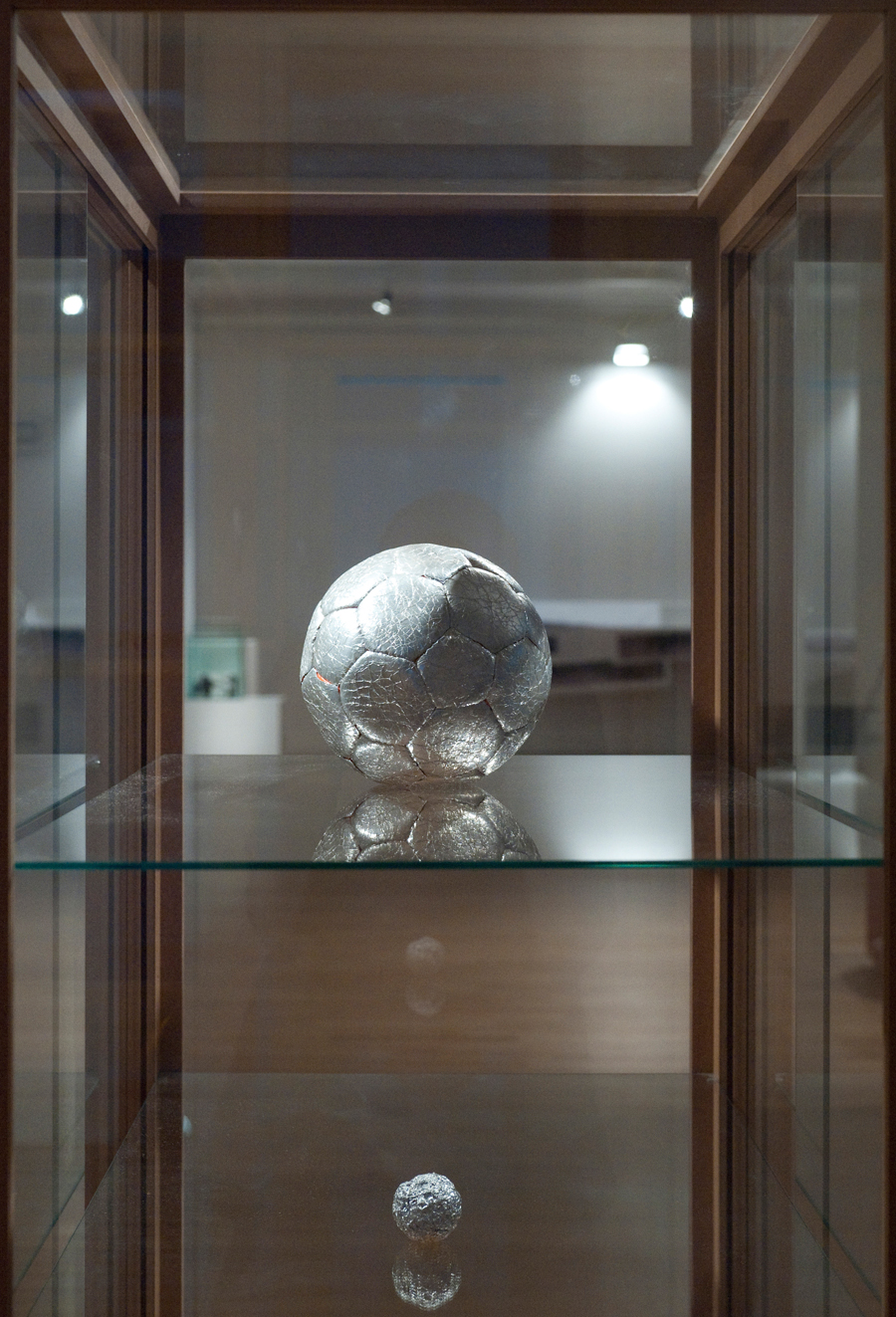David Maljković
Moderna galerija, Ljubljana, Slovenia
Moderna galerija, Ljubljana, Slovenia

In the first instalment of David Maljković’s breakout film trilogy, Scene for a New Heritage (2004–06), a trio of ‘heritage-seekers’ in the year 2045 attempt to make sense of sculptor Vojin Bakić’s scalloped, steel-panelled monument in the Croatian mountains of Petrova Gora. Commissioned in 1970 as part of the wave of spomeniks (modernist monuments designed to bolster Yugoslavia’s future by streamlining its past), Bakić’s structure commemorated a group of Serbian peasants who took up their pitchforks against the fascist-sympathizing Ustaše militia during World War II. Armed only with their formal analysis of this political abstraction, Maljković’s visitors glean nothing of the spomenik’s message, and instead assign to the object an entirely new significance.

This plot could be read as a model for Maljković’s approach to exhibition-making. His 2011 solo show at Vienna’s Secession, ‘Exhibitions for Secession’, built a retrospective out of vacated viewing architecture: podiums, vitrines and projectors, left like bones after a feast. For a 2013 exhibition at Vilnius’s Contemporary Art Centre, the artist veered to an opposite extreme with ‘New Reproductions’ (2013–15). For this series of wallpaper prints, he photographed and rephotographed overlapping artworks, sketches and outtakes from his studio practice, condensing multiple bodies of work into one collaged image. Each image operates only as a partial archive, the way multiple tabs on a browser window might suggest appetite, but not intake.
In 2015, Maljković continued to test display strategies with ‘A Retrospective by Appointment’, staged in collaboration with the curatorial collective What, How & For Whom? (WHW) in the artist’s hometown of Zagreb. Implicating the city’s lack of institutional infrastructure, the exhibition progressed from a salon-style hanging in the artist’s studio through the reception area of a professional design association and, finally, to the modest municipal art space administered by WHW, where Maljković countered white cube conventions by embedding all the works within the same oversized podium.

WHW originally intended to adapt this show for the Moderna galerija, but Maljković felt the anti-institutional spirit of the Zagreb exhibition could not be reconciled with the museum space. Instead, he appropriated elements of his previous ‘retrospectives’ and then animated them against the Moderna galerija’s institutional history, as told through its own ‘bones’ – the podiums, vitrines and pallets piled up in storage. The resulting exhibition, ‘Again and Again’, repurposes the stacked glass vitrines from the museum storage as readymade display cases, in and around which the artist has inserted his work. Maljković purposefully chose test prints, proofs and sketches, as a way of injecting his studio practice into the institution without the mediating ‘product’ of a finished work.
This flexibility allows the artist to take on the role of his ‘heritage-seekers’, drawing unexpected connections between bodies of works. For instance, the aluminium foil-coated football from the second instalment of Scene for a New Heritage shares a glass cabinet with the much smaller wadded ball of foil created by the revered Croatian sculptor Ivan Kožarić for Maljković’s 2013 film Undated. Within their respective films, the two spheres play very different roles: the football signals the speculative future of Scene’s setting, whereas the smaller metal orb – or, more precisely, its gradual formation between Kožarić’s practised palms – comprises the central action of Undated. Here, however, both objects become specimens of the same genus of ‘aluminium foil balls’.

While Maljković may experiment with selectively vacating his work, some pieces retain their original integrity. In Low Resolution (2014) offers a procession of 40 slides featuring street scenes or studio shots. Each image is interrupted by areas of exaggerated digital pixilation, despite the slides’ analogue nature. This mesmerizing disjuncture echoes the overall strategy of ‘Again and Again’ – obscuring what is offered as a way of directing attention to what remains unseen.






















